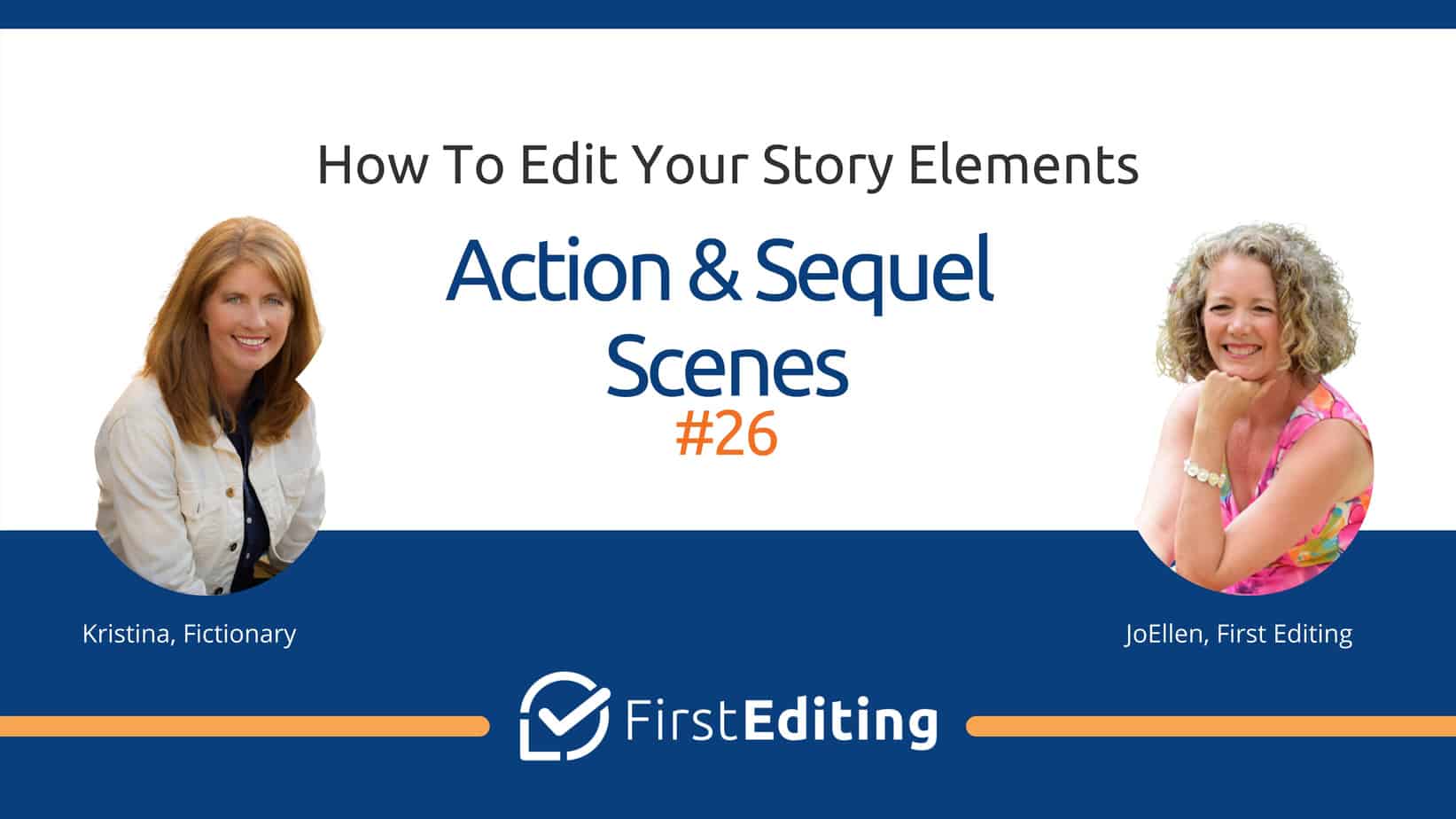Kristina Stanley from Fictionary joins JoEllen Nordstrom to talk about action and sequel scenes and their importance in writing.
Learn how to improve your scenes and writing by reading this chapter.
Action Scene
An action scene is where stuff happens. It consists mostly of dialogue and character movement, and description and character internalization are kept to a minimum. It is important to know that the action scene is often driven by the point-of-view character’s goal for the scene, which is what that character most wants to achieve for that scene.
Sequel Scene
A sequel scene is quieter. It’s where a character reacts to the events that happened in an action scene. This can be an emotional reaction, or a decision made, or simply thoughts. When done correctly, sequel scenes give the reader time to connect with your character. They see how the character reacts to everything that happened before, allowing them to get to know the character a little bit more and see how the character feels. Quite often, the reader is going to feel the same things.
The sequel scene is the downtime after all the action. This is where we take our breathers and connect deeply with ourselves. There is still tension in the sequel scene. Not everything is all happy and great. Even when the point-of-view character is super happy and thinks that what happened in the action scene is wonderful, there should still be underlying tension in that the situation is not quite as rosy as the character thinks, making the reader anxious.
It’s important to note that scenes can often blend. An action scene can have a few mini sequels,
and a sequel scene can have a lot of action. No scene is strictly black and white, but they should all lean one way or the other. A good rule of thumb is to ask, ”
Is the scene focused on conflict, or does it mostly deal with character reactions?” The answer will help you decide whether it’s an action or a sequel scene.
So, go through each scene in your story and mark it with an “a” or an “s.” Once you’ve done that, see how many action scenes you have in a row. When you get to about five or six, you want to start thinking about inserting a sequel scene. Ask yourself, should there be a character reaction to one of these action scenes?
In the thriller genre, you might have more action scenes than with other genres, with just a few sequel scenes here and there. But you still need a breather after a huge action sequence. And in romance novels, maybe the pace is a little softer and slower, and you have more sequel scenes. You need to know your genre and its expectations.
By looking at other books in your genre, you’re going to discover patterns for action and sequel scenes. For example, for a thriller, it might be action-action-sequel-action-action. It’s a lot of research, but it’s important to recognize these patterns. The first time you apply these patterns to your own book will be tough; there’s a learning curve. But once you get it down, you can apply it again and again as you write the sequels to your first book.
If you enjoyed this chapter, please share it with your friends and let us know what you learned from it.
WATCH NEXT EPISODE: Reader Knowledge Gained – EPISODE #27
WATCH PREVIOUS EPISODE: Middle and Climax – EPISODES #24 & #25
RETURN TO THE 38 STORY ELEMENTS















